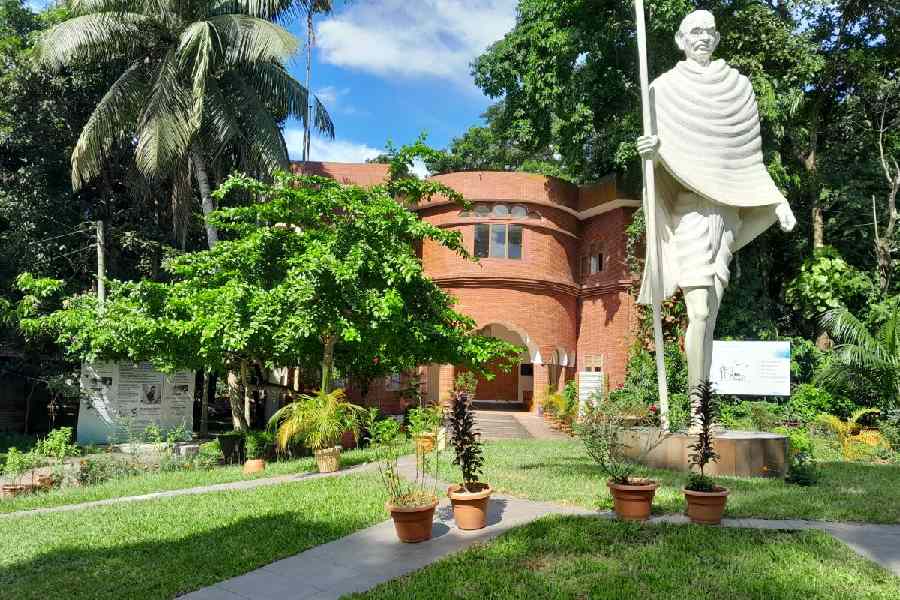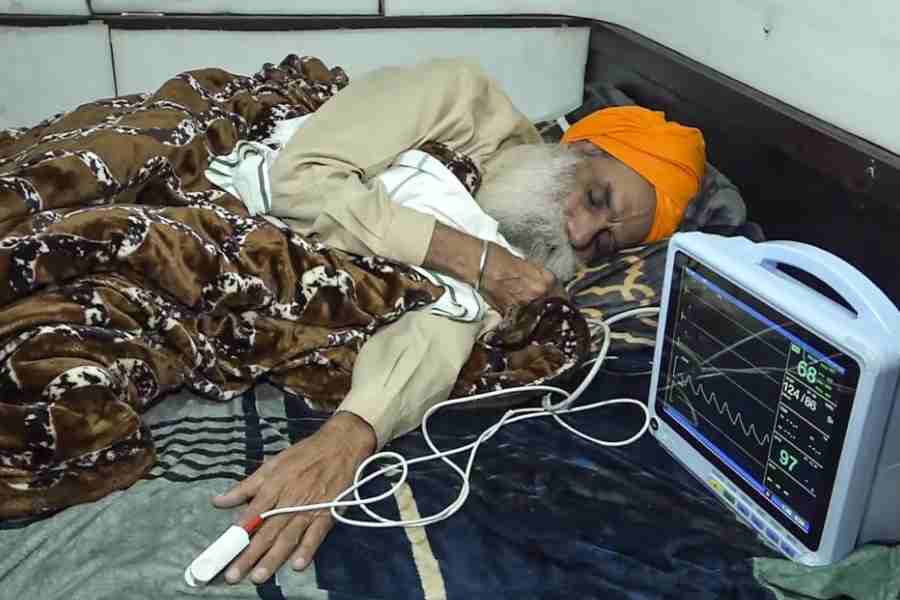Through all the chaos, carnage and violent death that preceded and followed across Bangladesh as Sheikh Hasina was ousted, there was one spot of tranquillity and calm in the southeastern coast of Bangladesh. The Gandhi Ashram at Jayag village in Noakhali district.
But that is not to say that this ashram has always been violence-free.
It is located at the heart of that very zone where one of the worst episodes of communal violence in the subcontinent occurred.Between October and November of 1946, nearly 400 villages spread over an area of 500 square kilometres witnessed inhuman horrors — including murder, loot, arson, rape and forcible conversion — in pre-Partition India.
That year, Mahatma Gandhi arrived in Noakhali to quell the riots and stayed on for four months.
As part of a peace mission, Gandhi, along with his companions and local people, toured 47 villages barefoot and held prayer meetings with members of all communities to heal the scarsof communal violence. In his biography Mohandas, his grandson Rajmohan Gandhi writes,“...he would halt overnight in those villages, mostly in humble homes. Their Hindu and Muslim hosts included dhobis, fishermen, cobblers and weavers.” According to Rajmohan, each of his visits “stirred the entire area with new life, provided succour to the violated humanity and provided people outside Noakhali a sense of relief”.
Today, after 78 years, Naba Kumar Raha, who is secretary of the Gandhi Ashram Trust in Jayag, Noakhali, believes Gandhi’s lonely furrow in his dogged pursuit of peace still guides people of the area. He told The Telegraph, “When violence engulfed various regions of the country following the former Prime Minister’s exit on August 5, we had not much to worry about. Political leaders across party lines and religious leaders reassured us that no one would harm the ashram or the people around it.”

Noakhali Ashram in Bangladesh. Courtesy: Gandhi Ashram Trust in Jayag, Noakhali
Raha is not easy to contact, not in these times. When I finally get through to him on the phone, he has just returned to the ashram after days of distributing relief to flash flood victims. “Through sustained humanitarian work for over three decades, we’ve been able to address communal hatred among villagers here,” he told me.
Raha cited an incident from two years ago. During Durga Puja, a group of Muslim villagers thwarted an attack on a Hindu temple at Ramganj, Noakhali, by another section from within their community. “These people, influenced by Gandhi’s philosophy, help us in our peace mission,” he said. “Convinced by our philanthropic approach over the past five decades, they also come forward to protect the ashram during communal strife.”
The ashram trust — it has a hundred odd workers — has been carrying out philanthropic work across Bangladesh, in sync with Gandhian philosophy. Gandhi set it up in a house and on land donated by barrister Hemanta Kumar Ghosh during his 1946 visit. Following Gandhi’s advice, Ghosh named it Ambika Kaliganga Charitable Trust, after his parents. Gandhi founded a primary education centre at the ashram, which was later renamed Gandhi Memorial Institute.
After Partition and especially after Gandhi’s assassination, most of his followers left the Noakhali Ashram. Only Charu Chowdhury remained along with a few others. Chowdhury was Gandhi’s disciple and the man entrusted with the running of the trust in Gandhi’s lifetime. The story goes that the Pakistan government made miserable the lives of anyone and everyone associated with the trust.
Social workers were constantly harassed and accused of being Indian spies, says Raha. False cases were filed against them and they were frequently thrown into jail. Chunks of the trust land were grabbed by anti-socials.
During the Liberation War of Bangladesh in 1971, the army and its collaborators surrounded the ashram and tortured all the volunteers to death. Charu Chowdhury was at the time in jail, which is why he survived. The mob looted the ashram, including its doors and windows, and burnt all the books and historical documents, says Raha.
After the birth of Bangladesh, when Charu Chowdhury was released from jail, he started reorganising the ashram trust. He recovered a part of the lost land after years of court battle. On October 2, 1975, following a gazette notification from the Bangladesh government, the Ambika Kaliganga Trust was renamed Gandhi Ashram Trust.
By now, Charu Chowdhury was old and ailing. The elder passed the torch to his colleague Jharna Dhara Chowdhury. She in turn inducted a large number of Muslim women workers from orthodox families and expanded the trust’s activities to 21 villages. As an autonomous institution, the trust now works primarily on women’s education and empowerment, legal aid, rural development and campaigns for human rights in the area.
Bidyut Debnath, a member of the Akhil Bhartiya Sarva Sewa Sangh, a Gandhian organisation based in Wardha, Maharashtra, had visited the Noakhali ashram in 2020. “What struck me was their impeccably maintained school that was informally founded by Bapu. Today the co-educational institute offers free education and food to over 500 students,” he said. Also, considering that fundamentalism is rife in the area, the trust’s work on women’s emancipation is commendable, according to Debnath.
Raha says that for three decades, the trust has solved around 28,000 cases of domestic violence and arbitrated over countlessfamily disputes. He says, “Men used to divorce their wives frequently until our women members started unique methods of arbitration involving religious leaders.” If a woman is given the talaq, the trust ensures that the man pays a hefty sum in compensation. It also helps the woman become self-sufficient by offering her micro-loans and training her in skills such as vegetable farming, khadi spinning and so on.
Today, a white marble statue of Gandhi stands in front of the freshly painted red brick mansion of the trust, surrounded by a garden. At a distance, there’s the Gandhi Memorial Primary School. According to Raha, Gandhi occasionally sat there under a tree with children and learnt to scribble Bengali letters and words on the pages of his diary. On March 2, 1947, he had to hastily leave for Bihar to quell another communal riot. He had promised the children he would return to the ashram to complete his lessons.
In January of 1948, Gandhi was assassinated. He could never return and make good his promise.










